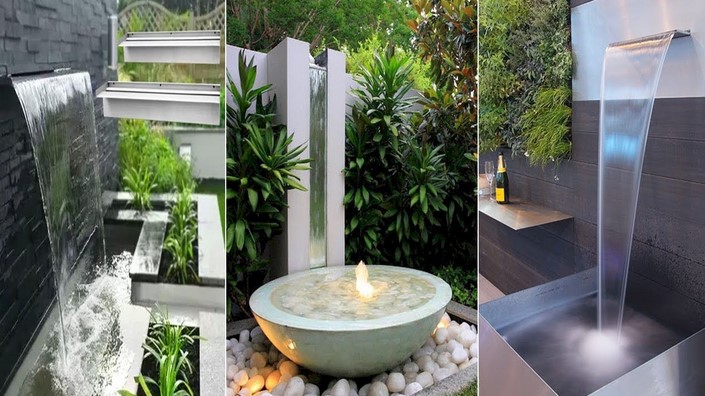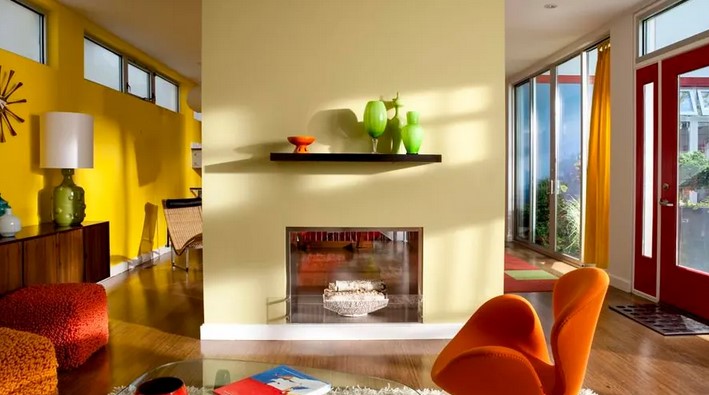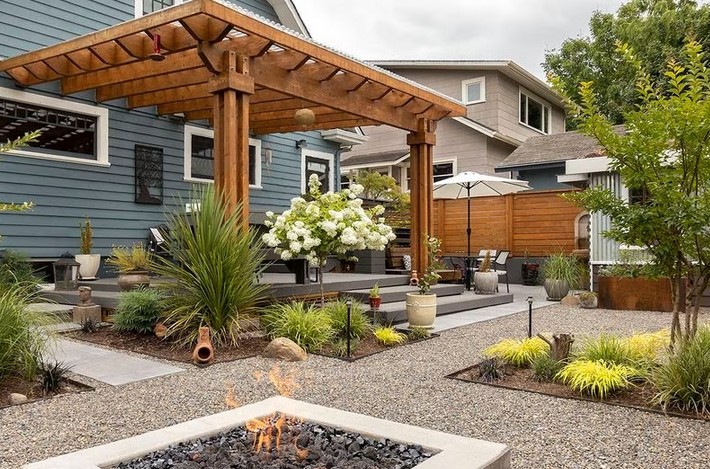Modern Outdoor Fountains: Add a Touch of Elegance to Your Garden
Modern Outdoor Fountains are a sophisticated addition to any garden, enhancing its aesthetic appeal and creating a serene atmosphere. These fountains, often crafted from materials like stone, metal, or glass, are not only visually stunning but also serve a functional purpose by circulating water. They come in a variety of designs, sizes, and styles, from minimalist to ornate, allowing homeowners to choose one that best complements their outdoor space. The soothing sound of flowing water from these fountains can transform a garden into a tranquil oasis, making it a perfect spot for relaxation. Modern Outdoor Fountains, therefore, not only add a touch of elegance to your garden but also contribute to a calming and peaceful environment.

Modern Outdoor Fountains: Add a Touch of Elegance to Your Garden
Modern outdoor fountains are increasingly becoming a popular choice for homeowners looking to add a touch of elegance to their gardens. These fountains, with their sleek designs and innovative features, not only enhance the aesthetic appeal of outdoor spaces but also create a serene and tranquil environment that can be enjoyed by all.
The beauty of modern outdoor fountains lies in their versatility. They come in a wide range of styles, sizes, and materials, allowing homeowners to choose a fountain that perfectly complements their garden’s design and layout. From minimalist, contemporary designs to more elaborate, intricate styles, there is a modern outdoor fountain to suit every taste and preference.
One of the most appealing aspects of modern outdoor fountains is their ability to transform any outdoor space into a peaceful oasis. The gentle, soothing sound of flowing water can help to create a calming atmosphere, perfect for relaxation and meditation. Moreover, the movement of water can also attract a variety of birds and wildlife to your garden, adding an element of nature and wildlife to your outdoor space.
In addition to their aesthetic appeal, modern outdoor fountains also offer a range of practical benefits. For instance, the movement of water in a fountain can help to improve air quality by releasing negative ions, which can help to reduce stress and promote a sense of well-being. Furthermore, outdoor fountains can also act as natural humidifiers, helping to maintain a comfortable humidity level in the surrounding area.
Modern outdoor fountains are also designed with ease of use and maintenance in mind. Many models come with built-in pumps and filtration systems, making them easy to install and maintain. Some fountains even feature solar-powered pumps, offering an eco-friendly alternative that can help to reduce energy consumption and save on electricity bills.
When it comes to materials, modern outdoor fountains offer a wide range of options. From durable, weather-resistant materials like stone and concrete to more lightweight options like fiberglass and resin, there is a material to suit every climate and garden style. Many modern fountains also incorporate elements of glass, metal, or ceramic, adding a touch of sophistication and elegance to their design.
Choosing the right modern outdoor fountain for your garden involves considering several factors. The size of the fountain should be proportionate to the size of your garden, and the style should complement the overall design of your outdoor space. It’s also important to consider the fountain’s water capacity and power source, as these factors can impact its performance and maintenance requirements.
In conclusion, modern outdoor fountains offer a unique combination of aesthetic appeal and practical benefits, making them an excellent addition to any garden. With their wide range of styles, sizes, and materials, these fountains can be tailored to suit any outdoor space, adding a touch of elegance and tranquility that can be enjoyed for years to come. Whether you’re looking to create a peaceful oasis for relaxation, attract wildlife to your garden, or simply enhance the aesthetic appeal of your outdoor space, a modern outdoor fountain could be the perfect solution.Modern Outdoor Fountains significantly enhance the aesthetic appeal of gardens, adding a touch of elegance and sophistication. They serve as a focal point, drawing attention and creating a serene, relaxing atmosphere. Their modern designs blend well with various garden styles, making them a versatile addition to any outdoor space.
Whole House Color Palette: Creating a Cohesive Look
The Whole House Color Palette: Creating a Cohesive Look is a comprehensive guide that provides insights on how to create a harmonious and balanced color scheme throughout your home. It emphasizes the importance of continuity and flow in interior design, and how the strategic use of color can enhance the overall aesthetic and mood of your living space. This guide offers practical tips and advice on choosing the right colors, combining different hues, and applying them to various elements of your home to create a cohesive and visually pleasing look.
Mastering the Art of Creating a Cohesive Whole House Color Palette
Creating a cohesive whole house color palette is an art that requires a keen eye for detail, a sense of balance, and an understanding of color theory. It’s about more than just choosing your favorite colors; it’s about creating a harmonious flow from room to room that enhances the overall aesthetic of your home.
To begin with, it’s essential to understand the concept of a color palette. A color palette is a selection of colors that are used consistently throughout a design project. In the context of interior design, this means choosing a set of colors that will be used throughout your home. This doesn’t mean every room has to be the same color, but rather that there is a consistent theme or tone throughout.
One of the first steps in creating a whole house color palette is to consider the overall mood you want to create. Do you want a calm and serene environment? Opt for cool colors like blues and greens. If you’re after a more energetic and vibrant feel, warm colors like reds, oranges, and yellows might be moresuitable.

Next, consider the architectural style and period of your home. A mid-century modern home might lend itself well to a palette of bold, primary colors, while a Victorian-era home might be better suited to a palette of muted, earthy tones.
Once you’ve decided on the overall mood and taken into account the architectural style of your home, it’s time to start selecting specific colors. A good rule of thumb is to choose three to five colors that will form the basis of your palette. These should include a mix of light, medium, and dark tones to provide contrast and depth.
When selecting these colors, it’s important to consider how they will look in different lighting conditions. Colors can appear very different under natural light compared to artificial light, so it’s a good idea to test your chosen colors at different times of the day and in different lighting conditions before making a final decision.
Once you have your base colors, you can start to think about accent colors. These are the colors that will be used sparingly to add pops of color and interest throughout your home. They should complement your base colors but provide enough contrast to stand out.
Creating a cohesive whole house color palette also involves considering the flow from room to room. This doesn’t mean every room has to be the same color, but there should be a sense of continuity. This can be achieved by using different shades of the same color, or by using the same accent color in different rooms.
Finally, remember that creating a cohesive whole house color palette is a process. It’s not something that has to be decided in one day. Take your time, experiment with different colors, and don’t be afraid to make changes as you go.
In conclusion, mastering the art of creating a cohesive whole house color palette involves understanding color theory, considering the mood you want to create, taking into account the architectural style of your home, selecting a mix of base and accent colors, and considering the flow from room to room. With careful planning and consideration, you can create a color palette that enhances the aesthetic of your home and creates a harmonious and pleasing environment.In conclusion, a whole house color palette is essential in creating a cohesive look throughout the home. It ensures that all rooms flow together seamlessly, creating a sense of harmony and balance. This doesn’t mean every room should be the same color, but rather that the colors should complement each other. A well-planned color palette can enhance the overall aesthetic of the home, making it more appealing and inviting.
Patio Gravel: Choosing and Installing the Right Type
Patio Gravel: Choosing and Installing the Right Type is a comprehensive guide that provides detailed information on the various types of patio gravel available in the market, their specific characteristics, and their suitability for different patio designs. It also offers step-by-step instructions on how to properly install patio gravel, ensuring durability and aesthetic appeal. This guide is an essential resource for homeowners looking to enhance their outdoor living spaces with the right type of patio gravel.
The Ultimate Guide to Choosing and Installing the Right Type of Patio Gravel
Patio gravel is an essential element in landscaping, offering a cost-effective and versatile material for various outdoor designs. Whether you’re creating a new patio or revamping an existing one, choosing and installing the right type of patio gravel can significantly enhance your outdoor space’s aesthetic appeal and functionality. This article will serve as your ultimate guide to making the right choice and ensuring a successful installation.

When it comes to choosing the right type of patio gravel, several factors come into play. The first consideration is the size of the gravel. Gravel sizes range from fine sand-like particles to larger stones. The choice depends on the desired texture and the patio’s intended use. For instance, if you plan to place furniture on the patio, larger stones may not provide a stable base. In such cases, smaller gravel or decomposed granite would be a better choice.
The color of the gravel is another crucial factor. Gravel comes in a variety of colors, from earthy browns and neutral grays to vibrant reds and blues. The choice of color should complement the overall design of your landscape and the exterior of your home. For a harmonious look, consider choosing a gravel color that matches or contrasts nicely with your home’s exterior or other hardscape elements in your yard.
The shape of the gravel also matters. Rounded pebbles offer a softer look and feel underfoot, while angular gravel provides a more formal and structured appearance. The choice between rounded and angular gravel depends on your personal preference and the style of your landscape.
Once you’ve chosen the right type of patio gravel, the next step is installation. Proper installation is crucial to ensure the longevity and functionality of your gravel patio. Start by preparing the site. Remove any existing grass or plants and level the ground. It’s also advisable to install a weed barrier to prevent unwanted growth from disturbing your patio.
Next, install a sturdy border to contain the gravel. This could be made of wood, metal, or stone, depending on your preference and the style of your patio. The border should be installed deep enough to hold the gravel in place but high enough to prevent it from spilling over.
After setting up the border, it’s time to lay the gravel. Spread it evenly across the patio area, ensuring a depth of at least two inches for optimal stability. You can use a rake to spread the gravel and a tamper to compact it. This will create a firm, stable surface that can withstand foot traffic and the weight of patio furniture.
Finally, maintain your gravel patio regularly to keep it looking its best. This includes raking the gravel to maintain an even surface, removing any weeds that may sprout, and adding more gravel as needed to maintain the desired depth.
In conclusion, choosing and installing the right type of patio gravel requires careful consideration and proper execution. By taking into account factors such as gravel size, color, and shape, and following the correct installation procedures, you can create a beautiful and functional gravel patio that enhances your outdoor living space.In conclusion, choosing and installing the right type of patio gravel is crucial for the durability and aesthetics of your outdoor space. The selection process involves considering factors such as size, color, and type of gravel that best suits your patio design and usage. The installation process, on the other hand, requires careful preparation of the patio area, proper layering and compacting of the gravel for stability and drainage. Therefore, both the choice and installation of patio gravel require thoughtful planning and execution.